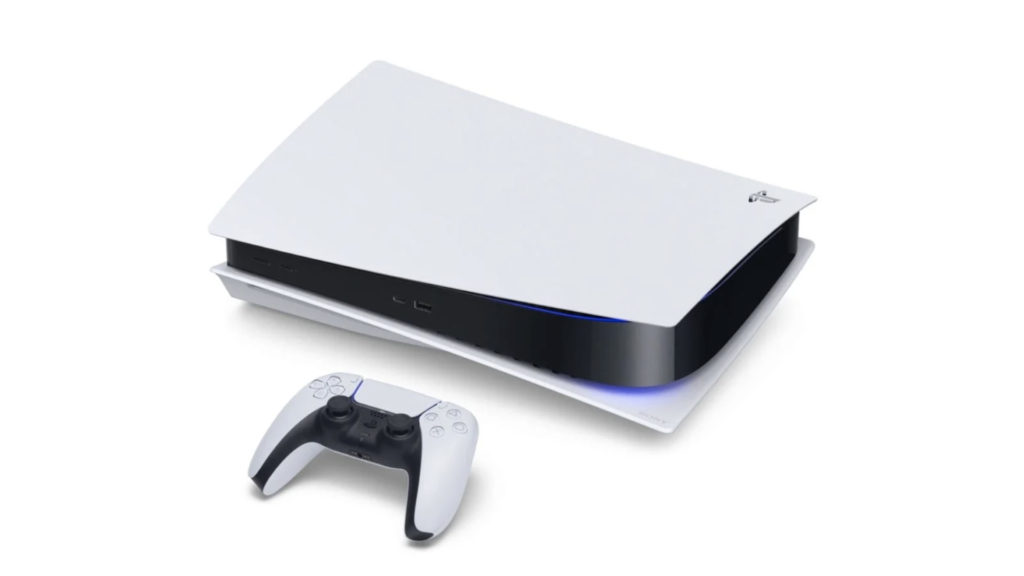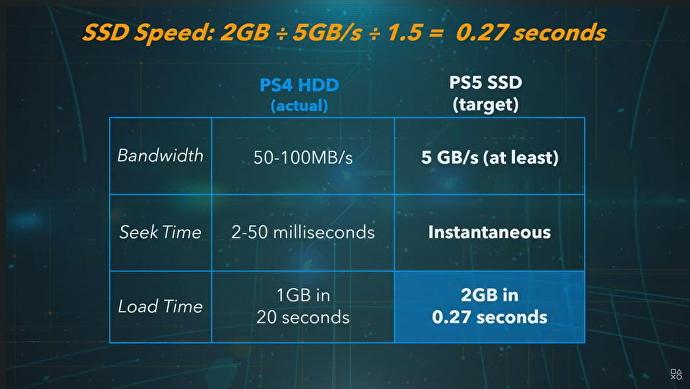
Ever since the announcement of the PlayStation 5, Sony has taken considerable effort to highlight its unprecedentedly fast NVMe SSD solution as a next-gen game changer.
From a technical perspective – and we say this after being jaded by subpar console hardware for the better part of a decade – the PlayStation 5’s SSD is revolutionary. The eight-core Zen 2 processor and the 10.28 TFLOP RDNA2 Navi graphics unit are a massive leap in capabilities. However, high-end PCs match or exceed these specs. When it comes to storage, though the PlayStation 5’s SSD is objectively something that has no direct counterpart in the PC market, at least right now. (Well, unless you put a pair of NVMe Gen4 SSDs in RAID 0).
Sony and developers have made much of how the PlayStation 5’s SSD is going to revolutionize loading times. A a matter of fact, the earliest glimpse we had of that super-fast SSD in action was some leaked footage of Spider-Man loading on the PlayStation 5 virtually instantaneously. However, as Epic’s Lumen in the Land of Nanite demo showcases, developers are already finding ways to integrate super-fast storage into their workflow that have a direct impact on visuals and performance, not just loading times. The PlayStation 5 is months away. For the time being, though, let’s take a look at the top five ways the PlayStation 5’s SSD will revolutionize gaming, apart from fast loading.
More – and more unique – assets
The PlayStation 5’s super-fast SSD is a real boon when it comes to in-game asset quality and diversity. One of the major constraints in the eighth generation was that developers were forced to recycle art assets to meet the double-edged challenge of limited memory and slow storage. This was particularly noticeable in open world titles where the same lamp-posts, the same road textures, and the same mildly palette-swapped NPCs broke immersion. Developers have long struggled to build solutions to this issue. As far back as the late seventh-gen, id Tech 5 was built around Megatexture technology to achieve the same objective: to deliver unique, high quality art assets that don’t have to repeat or tile.
In the ninth-gen, the combination of high memory capacity and high-speed storage means that assets can be swapped in and out of memory well within the 16-millisecond length of a single frame. Assets don’t have to be replicated since unique meshes and textures can be seamlessly swapped in and out. This’ll lead to worlds that aren’t just more detailed, but that feel less generic.
An actually comfortable OS experience
Yes, consoles aren’t built to offer a computing experience outside gaming. It’s understandable that the dashboard on the PlayStation 4 and Xbox One isn’t exactly the most convenient thing in the world. However, a faster SSD solution should speed up OS interactions considerably, much as it does on Windows.
This would matter most in terms of the web browsing experience. With a fast connection, pages should load seamlessly and multiple there shouldn’t be major hiccups when playing media or accessing rich content. Consoles would actually be semi-decent couch HTPC alternatives, but the sluggish and inconsistent operating experience is one of the key reasons most people give them a pass. The PS5’s fast SSD and plentiful RAM could enable you to switch between Netflix, Amazon Prime Video, and IMDB as fast as your internet connection allows.
The rumored Quick resume could be used in innovative ways
The PlayStation 5’s rumored Quick Resume feature relies on its fast SSD storage solution to enable players to instantly pick up and play without having to go through long loading screens. But what if Quick Resume could be used for more than just convenience? A limited number of games today query real-life parameters to influence the game world – the weather and general time of day, for instance.
However, quick resume combined with cross device experiences – mobile companion apps, for instance – could lead to interesting intersections between the real world and the game environment: resuming the game could hypothetically be a kind of real life QTE initiated on a mobile companion app.
The storage media is fast enough that certain types of state changes could even be possible while you resume: in this case, imagine pausing during a game’s early morning and then resuming during the in-game evening.
Game sizes might shrink – or at least not balloon drastically
One of the biggest inconveniences introduced by eighth generation titles has been drastically increased storage requirements. Today, we have games like Red Dead Redemption 2 that eat up well over 100 GB. A big reason for this is that developers rely on reduplicating assets in order to ensure fast access from hard drives. Because storage speed is no longer a limiting factor, PlayStation 5 games will only need a single instance of particular assets that can be loaded in as and when needed.
This could cause file size requirements to shrink substantially. Talking about their development process in Spider-Man, Insomaniac described an example where one trash bag asset was duplicated hundreds of times, resulting in it taking up nearly 2 GB of space. The space savings here will likely be offset by the increased number of unique assets and the larger scale of ninth gen games. However, we’re hopeful that players won’t have to contend with 300GB PlayStation 5 downloads any time soon.
Eliminating LODs from the picture
No matter how good asset quality is up close, poor LOD transitions in the mid and far distance make many PlayStation 4 games look terrible. Jedi: Fallen Order is a great example. Up close, the game’s photogrammetry-based materials look true to original Star Wars movies. However, in scenes with distant objects, far LODs make a substantial portion of the onscreen action look a PlayStation 2 game. As Epic demonstrated in the Lumen in the Land of Nanite demo, fast SSD storage can be used to turbocharge the LOD transition process. Instead of having a few fixed LOD steps with obvious transitions between them, game developers can calibrate dynamic LODs that scale onscreen detail based on pixel counts.
At a given resolution, as an object recedes into the distance, the number of pixels physically capable of displaying it reduce, eventually down to a single dot. In current systems, however, object complexity only scales with distance, and not displayed pixel count. At fixed distance intervals, different LODs are loaded. The alternative here – which requires fast SSD storage to shine – is to constantly scale asset quality to ensure that no detail is lost – and conversely, that calculations aren’t done on the parts of object that aren’t actually represented onscreen.
Let’s look at an example: if a 10×10 grid of pixels is all that’s available to render the top of a distant tree, today’s games will either lowest-quality LOD or a billboard (a sprite put in place of the object). If the player approaches the tree, until they reach the distance trigger for the next LOD, they’ll still see those low-quality assets – only now blown up to a 20×20 grid. With dynamic LOD scaling, actual asset quality on the back end would be a 1:1 match for what the display is capable of displaying, meaning seamless transitions and no apparently loss in detail.
Conclusion
Sony’s been talking a lot about how its SSD storage solution will revolutionize 9th gen gaming. This, however, seems to be one of those rare times when the marketing hype matches a genuine paradigm shift. We think that the PlayStation 5’s SSD will enable remarkable improvements to PlayStation 5 games. We’re excited to see what developers do with it.

















